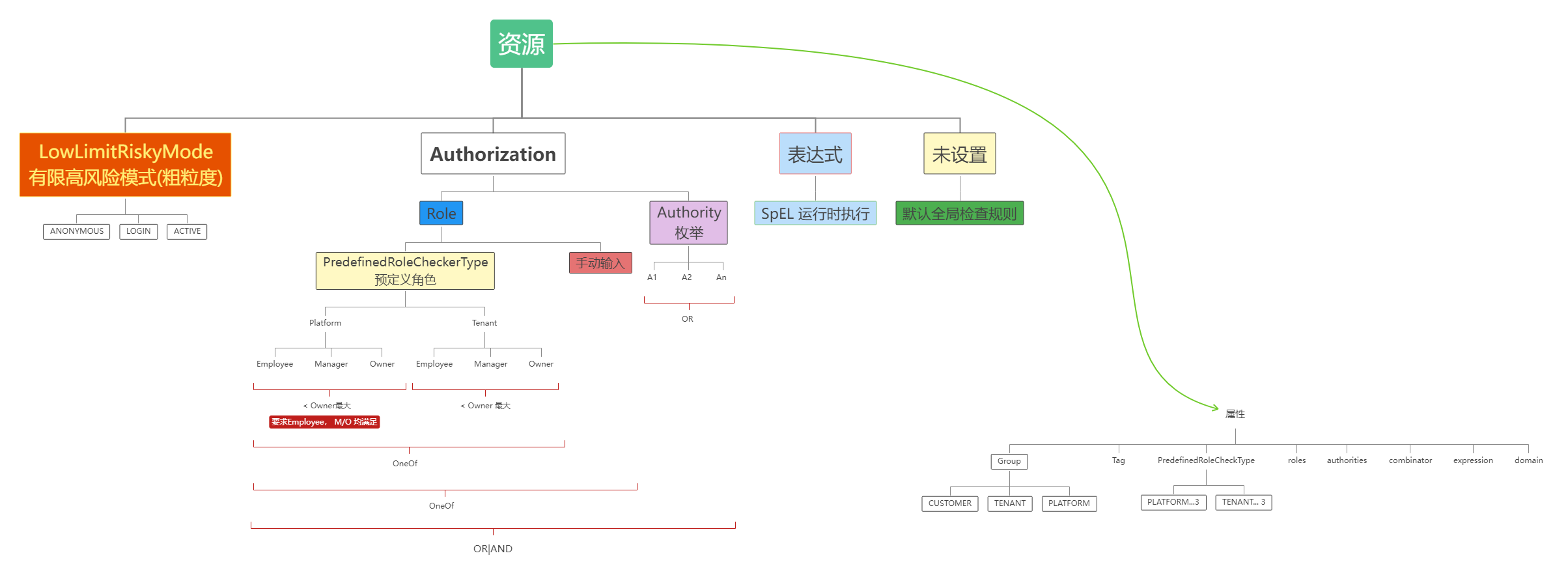
- Framework
- 极简 Authentication & Authorization
Framework
极简 Authentication & Authorization
Hope 实现Authentication & Authorization, JWT, RBAC
Authentication
JWT
Authorization
要检查登录账户的权限,您需要三个步骤:
- 定义资源(API路径)的授权属性
- 登录账户安全上下文自定义
- 设置账户和权限的映射
Define resource authorization
检查 Milestone 20240510 rbac 部分:

1. 设置权限枚举
enum BookAuthorityEnum {
option (hope.swagger.enm) = {
description: "Authority used in book project"
};
BOOK_ADD = 0 [(hope.constant.field) = {code: 1,message: "book:add", message2: "Authority to add book"}];
BOOK_DELETE = 1 [(hope.constant.field) = {code: 2,message: "book:remove", message2: "Authority to delete book"}];
BOOK_MODIFY = 2 [(hope.constant.field) = {code: 3,message: "book:modify", message2: "Authority to modify book"}];
}2. 添加枚举到 hope-wire.json 配置
"authority" : {
"enumClass" : "com.novel.book.proto.infra.settings.BookAuthorityEnum",
"codePrefix" : 10240000
}3. 包含你的资源
rpc ListCategory (com.novel.book.proto.api.admin.request.CategoryListRequest) returns (com.novel.book.proto.api.admin.response.CategoryVoResponse) {
option (hope.swagger.operation) = {
get: "/list-category";
description: "list all the categories support";
priority: MIDDLE;
out_plural: true;
authorization:{
rbac:{
authorities: "BOOK_DELETE";
combinator: OR;
predefined_role_checker: PLATFORM_MANAGER
}
}
};
}4. 运行时配置
这些配置将在您的应用程序模块中进行,而不是在proto模块中:
在您的应用程序项目的包中找到自动生成的代码模板:${PKG}.infra.security(以Book为例,域为Book):
1. AnonymousBookCustomer.java
2. BookCustomer.java
3. BookJWTPicker.java
4. BookQuickCustomerRoleChecker.java
5. BookSecurityCustomerContextCustomizer.java
6. BookSecurityCustomizer.java| Class | Usage | Comment |
|---|---|---|
AnonymousBookCustomer | 匿名顾客定义 | 通常无需更新 |
BookCustomer | 在安全上下文中使用的顾客 | 扩展以便动态加载附加字段,如权限,通常是BookSecurityCustomerContextCustomizer的响应,用于初始化并进行包装,需扩展 |
BookJWTPicker | 获取JWT的位置 | 通常从头部获取,但也可以从会话或cookies中获取 |
BookQuickCustomerRoleChecker | 快速平台/租户角色检查器 | 通常需要扩展 |
BookSecurityCustomerContextCustomizer | 安全上下文顾客初始化的响应 | 从token获取更多详细信息,创建新的顾客,如委托权限/角色获取器 |
BookSecurityCustomizer | 安全配置定制 | 更改全局安全策略:如默认访问检查,或特定路径的特定规则 |
5. 最后部分
这不是框架所能提供的,因为这依赖于您的业务逻辑:如何设置您与权限列表的账户关系。
最佳实践是遵循基于角色的访问控制,即 RBAC。
因此,您可以利用权限枚举,例如 BookAuthorityEnum 的消息模式来组织您的权限层次结构:
以这个书籍应用程序为例:
BOOK_ADD: book:add
BOOK_DELETE: book:delete
USER_BLOCK: user:block
USER_EDIT: user:edit
ORDER_APPROVE:order:approve
ORDER_DELETE:order:delete
ORDER_MODIFY:order:modify
因此,层次结构可能如下所示:
+---book
| add
| delete
|
+---user
| block
| edit
|
+---order
| approve
| delete
| modify
㊗️ so enjoy!
禁用 Spring Security
⚠️ Apihug Security 与 Spring Security 在运行时不兼容。
禁用 Spring Security 最简单的方法是从项目中移除其 依赖项。
通过移除以下依赖,可以清除项目中所有由 Spring Security 提供的安全配置和默认设置:
<dependency>
<groupId>org.springframework.boot</groupId>
<artifactId>spring-boot-starter-security</artifactId>
<version>...</version>
</dependency>移除该依赖后,应用程序中将不再包含任何 Spring Security 的功能。
但如果您仍希望使用部分 Spring Security 的组件,我们建议您手动禁用其自动配置功能:
排除 Spring Security 自动配置
当项目类路径中包含 spring-boot-starter-security 时,Spring Boot 会自动启用安全配置。若要禁用该自动配置,可在 application.properties 文件中添加如下配置:
spring.autoconfigure.exclude=org.springframework.boot.autoconfigure.security.servlet.SecurityAutoConfiguration如果您希望完全禁用 Spring Security,建议仅通过 spring.autoconfigure.exclude 配置实现,而不要创建 SecurityConfiguration 类。
请注意:手动定义 Spring Security 配置类会覆盖 application.properties 中的配置,因此当两者同时存在时,application.properties 中的排除配置将失效。


